|
The post-occipital sinus of the spinal vein is often used for the collection of blood samples from crocodilians. Although this sampling method has been reported for several crocodilian species, the technique and associated anatomy has not been described in detail in any crocodilian, including the Nile crocodile (Crocodylus niloticus). The anatomy of the cranial neck region was investigated macroscopically, microscopically, radiographically and by means of computed tomography. Latex was injected into the spinal vein and spinal venous sinus of crocodiles to visualise the regional vasculature. The spinal vein ran within the vertebral canal, dorsal to and closely associated with the spinal cord and changed into a venous sinus cranially in the post-occipital region. For blood collection, the spinal venous sinus was accessed through the interarcuate space between the atlas and axis (C1 and C2) by inserting a needle angled just off the perpendicular in the midline through the craniodorsal cervical skin, just cranial to the cranial borders of the first cervical osteoderms. The most convenient method of blood collection was with a syringe and hypodermic needle. In addition, the suitability of the spinal venous sinus for intravenous injections and infusions in live crocodiles was evaluated. The internal diameter of the commercial human epidural catheters used during these investigations was relatively small, resulting in very slow infusion rates. Care should be taken not to puncture the spinal cord or to lacerate the blood vessel wall using this route for blood collection or intravenous infusions.
Blood samples are routinely collected from crocodilians for general health examination purposes (Huchzermeyer 2003), pharmacokinetic studies (Helmick et al. 2004a, 2004b; Martelli et al. 2009), ecotoxicological monitoring (Bermudez et al. 2005; Milnes et al. 2002), endocrinological investigations (Boggs et al. 2011; Edwards et al. 2004; Hamlin, Lowers & Guillette 2011) or other research projects (Franklin et al. 2003). Laboratory investigations very often depend on the ability of the clinician or scientist to collect appropriate blood samples as atraumatically as possible from live crocodilians (Lovely, Pittman & Leslie 2007; Millan et al. 1997; Rossini et al. 2011; Zayas et al. 2011). The most commonly used anatomical access points for venipuncture and blood collection from crocodilians are: the dorsal neck (Bermudez et al. 2005; Jacobson 1984; Lloyd & Morris 1999; Martelli et al. 2009; Milnes et al. 2002; Olson, Hessler & Faith 1975; Pothiwong, Prachammuang & Koykol 2000; Sykes & Klaphake 2008), ventral tail (Gorzula, Arocha-Piñango & Salazar 1976; Rossini et al. 2011), dorsal tail (Huchzermeyer 2003) and temporal (Samour et al. 1984) regions. Blood can also be collected directly from the heart (Carmena-Suero et al. 1979; Jacobson 1984; Lloyd & Morris 1999). MacLean, Lee and Wilson (1973) reported a simple method of obtaining small blood samples from the orbital sinuses in reptiles. This method has not been described for crocodilians. Although the blood vessel in the post-occipital neck region (dorsal neck approach) is most often used (Bermudez et al. 2005; Boggs et al. 2011; Hamlin et al. 2011; Lovely et al. 2007; Martelli et al. 2009; Millan et al. 1997; Milnes et al. 2002; Stacy & Whitaker 2000; Sykes & Klaphake 2008; Zayas et al. 2011), the nomenclature associated with this vessel is unfortunately very confusing. Zippel, Lillywhite and Mlandinich (2003) conducted an in-depth study of the anatomy of this blood vessel, which is closely associated with the spinal cord, in several crocodilian species (Alligator mississippiensis, Caiman latirostris, Crocodylus siamensis and Osteolaemus tetraspis) and named it the spinal vein. However, the post-occipital part of the spinal vein (area of venipuncture) has also been called the internal jugular (Huchzermeyer 2003; Jacobson 1984; Olson et al. 1975), occipital sinus (Martelli et al. 2009; Stacey & Whitaker 2000), occipital venous sinus (Lloyd & Morris 1999), post-occipital sinus (Lovely et al. 2007), post-occipital venous sinus (Millan et al. 1997), subdural sinus (Pothiwong et al. 2000), post-cranial supravertebral sinus (Boggs et al. 2011; Sykes & Klaphake 2008), post-cranial supravertebral blood vessel (Bermudez et al. 2005; Edwards et al. 2004), supravertebral occipital venous sinus (Zayas et al. 2011) and post-cranial vertebral vein (Milnes et al. 2002). In humans, the equivalent blood vessel is referred to as the posterior internal vertebral venous plexus (Groen et al. 1997). Based on the findings of this study, the term spinal venous sinus will be used whenever we refer to the post-occipital part (area of venipuncture) of the spinal vein. A basic knowledge of the anatomy of this blood vessel, especially in the post-occipital region, is essential if it is to be used for clinical procedures in crocodilians. However, the anatomy of this blood vessel, especially in the Nile crocodile (Crocodylus niloticus), has not been thoroughly investigated. Zippel, Lillywhite and Mlandinich (2001) described this vascular system in eight snake species, representing three families, as an elaborate vertebral plexus extending from the base of the skull to the tip of the tail. In a follow-up investigation, the same authors (Zippel et al. 2003) reported that crocodilians possessed a well-developed spinal vein, with caval and hepatic connections, that contributed significantly to the return of blood to the heart from the rest of the body. They also stated that the occipital sinus covered the dorsal and lateral surfaces of the crocodilian brain and drained caudally through the foramen magnum into a voluminous post-occipital sinus, after which it continued caudally as a non-plexiform (single) extradural spinal vein, remaining dorsal to the spinal cord for the entire length of the vertebral column. Clinicians required to access the spinal venous sinus to collect blood samples or give intravenous (IV) injections are faced with a dilemma as the spinal venous sinus is well-covered with soft tissue and venipuncture is limited by the surrounding osseous structures (Zippel et al. 2003). It is the authors’ experience that only the tip of a perpendicularly angled needle can access the blood vessel. This makes it extremely difficult, specifically, to inject even small volumes into the venous sinus, or to insert an IV catheter. Some or even all of the liquid could easily be injected perivascularly if the tip of the needle is moved slightly or if the animal is not kept completely still during the procedure. As the systemic circulation can be accessed directly through the spinal venous sinus, IV injections or continuous infusions in crocodiles may be helpful in the treatment of individual cases or when needed for specific research projects. Enrofloxacin (Baytril, 22.7 mg/mL) (Helmick et al. 2004a) and oxytetracycline (Liquamycin LA, 200 mg/mL) (Helmick et al. 2004b) were injected IV into American alligators (A. mississippiensis). Martelli et al. (2009) also used this blood vessel to administer enrofloxacin (Baytril, 50 mg/mL) to healthy captive-reared estuarine crocodiles (Crocodylus porosus). Edwards et al. (2004) used the same blood vessel for IV injections of ovine follicle stimulating hormone (FSH) in 4-year-old male American alligators. The purpose of this study was to investigate and describe the clinically relevant anatomy of the post-occipital spinal venous sinus, including external landmarks, together with the associated clinical procedures of blood sampling and IV infusion in the Nile crocodile.
|
Research method and design
|
|
Cervical and spinal venous sinus anatomy
Three mature crocodiles, > 2.2 m in total length (TL), and six young crocodiles (1.0 m – 1.5 m TL) were obtained from a commercial crocodile farm (Izintaba Crocodile Farm, De Wildt, North West Province, South Africa). The three mature crocodiles were received as fresh carcasses for necropsies by the Pathology Section, Department of Paraclinical Sciences, Faculty of Veterinary Science, University of Pretoria. The three heads and necks (HaNs) were removed for further processing during the necropsy investigations (Table 1). The individual bones of one HaN were cleaned, reassembled and glued in place to study the anatomy. Rubber latex was injected directly into the cervical spinal vein, from the caudal end (cut surface), of the two remaining HaNs to investigate the morphology of the blood vessel. This was achieved by cutting one of the heads along the midline from the snout to the end of the neck and by cutting the other head into ± 2 cm-thick transverse sections using a commercial bandsaw (Table 1). Six young crocodiles were humanely euthanised (project number: V041/05) with sodium pentobarbitone (Eutha-naze; Bayer Animal Health, Isando, South Africa) injected IV and the HaNs removed to investigate cervical anatomy and spinal venous sinus morphology (Table 1). In the case of one of the HaNs, necrophagous insects were used to remove the excess soft tissue to preserve the individual cervical bones in their original positions. The preparation and processing procedures, and final examinations performed on the HaNs are summarised in Table 1.
|
TABLE 1: Summary of the preparation, processing and examination of the crocodilian heads and necks used in the study.
|
Diagnostic imaging
Before being used to visualise the regional vasculature, the HaN of one of the latex-infused mature crocodiles underwent radiographic and computed tomography (CT) examinations (Emotion dual slice CT; Siemens, Erlangen, Germany) to assess the morphology of the cranial cervical vertebrae (Table 1). Additionally, a live young crocodile (1.42 m TL) from another research project (project number: V006/09) was used for a contrast enhanced CT scan. Information about this animal is not reflected in Table 1 because the CT scan was performed as part of a more complete clinical investigation of this healthy crocodile and it was not euthanised afterwards. It was immobilised with 0.5 mL gallamine triethiodide (Flaxedil; Kyron Laboratories [Pty] Ltd, Benrose, South Africa) intramuscularly before the procedure (Flamand, Rogers & Blake 1992; Loveridge & Blake 1972). The CT scan of the live animal was performed in order to record the post-occipital spinal venous sinus and the cervical spinal vein relative to the rest of the circulation with the vascular system filled with blood. Iohexol 300 mg/mL (Omnipaque; GE Healthcare, Weltevreden Park, South Africa) was injected into the spinal venous sinus by means of an epidural catheter. Transverse and multiplanar reformatted images were made in bone and soft tissue windows together with volume rendered images.
Microanatomy of the post-occipital cervical region
Several hatchling carcasses were received from a commercial crocodile farm for necropsies. The HaNs of three fresh carcasses were removed, fixed in situ in 10% buffered formalin, decalcified with formic acid as described by Bancroft and Gamble (2003) and routinely processed for light microscopy (Table 1). Transections of the post-occipital region were stained with haematoxylin and eosin and examined by bright field light microscopy. Images were digitally recorded, focusing on the spinal venous sinus in the post-occipital region.
Blood sampling
The post-occipital region was used for the collection of blood samples (± 350) from a wide range of Nile crocodiles (0.5 m – 3.8 m TL) in southern Africa over a period of five years (2007–2011) by the principal author (J.G.M.). A hypodermic needle attached to a syringe was used and the samples transferred to specific blood tubes immediately after collection. Different lengths (mm) and gauges (G) of hypodermic needles were evaluated to determine their suitability – 32 mm 22G (0.7 mm outer diameter [OD]), 25 mm 20G (0.9 mm OD), 38 mm 20G (0.9 mm OD) and 38 mm 18G (1.2 mm OD) – as well as an 88 mm 18G (1.2 mm OD) spinal needle (Terumo Corporation, Tokyo, Japan). All the different hypodermic needles had regular bevels and the spinal needle a short bevel. During the collection of blood samples relevant external landmarks relative to the placement of the needle were identified. All complications or side effects (e.g. paralysis) associated with blood sampling were recorded and further investigated. Complete necropsies were performed on affected animals to examine possible damage to the wall of the spinal venous sinus and surrounding tissues.
Injections and infusions using the spinal venous sinus
Three of the six young crocodiles (Table 1) were euthanised with sodium pentobarbitone (Eutha-naze; Bayer Animal Health, Isando, South Africa) injected directly into the spinal venous sinus using either 25 mm or 38 mm 20G hypodermic needles (Table 1). Commercial human epidural catheterisation sets were obtained and evaluated in four young live crocodiles. Using this method, three animals were euthanised with sodium pentobarbitone (Table 1) and one animal was infused with contrast medium for the CT scan (see subsection entitled ‘Diagnostic imaging’ above). Epidural needles (80 mm 18G) and the accompanying 920 mm 20G epidural catheters (B-D® DurasafeTM 18G 405096; Becton Dickinson Benelux S.A., Erembodegem, Belgium) were used. Each epidural needle was inserted into the spinal venous sinus with the tip opening pointing in a caudal direction. In each crocodile, the correct positioning of the needle tip in the blood vessel was confirmed by ready aspiration of venous blood. The accompanying epidural catheter was immediately inserted through the needle into the spinal venous sinus and pushed caudally into the spinal vein. The exact position of the three catheters was confirmed after death and following removal of the HaNs (Table 1). In respect of the young crocodile destined for the CT examination (1.42 m TL), a similar epidural catheter was inserted into the spinal venous sinus for the infusion of contrast medium. An administration set (Sabax paediatric solution administration set, AFC 0186; Adcock Ingram Critical Care (Pty) Ltd, Johannesburg, South Africa), 60 drops/mL, was attached to the catheter and sterile saline (Sabax sodium chloride 0.9%; Adcock Ingram Critical Care (Pty) Ltd, Johannesburg, South Africa) administered, as fast as the catheter would allow, to confirm that the catheter was correctly inserted in the blood vessel. After 250 mL of saline was administered, the procedure was considered to be a successful IV catherisation and the contrast medium injected.
Anatomy of the post-occipital cervical region and spinal venous sinus
Dorsally, a horizontally oriented, cranio-caudally inclined, flat triangular bone formed the cranial aspect of the roof of the atlas. This bone also covered the space between the base of the skull and the remaining components of the atlas. The base of the bone formed the cranial border of the dorsal opening or space present between the atlas and axis (Figure 1 and Figure 2). Paired lateral bones made up the sides and roof of the neural arch. These bones were complex in shape and articulated cranially with the occipital condyle and caudally, at two points, with the cranial aspects of the axis. The lateral bones flattened dorsally and arched medially, but only partially, towards each other to complete the roof of the atlas. The paired lateral bones thus formed the lateral borders of the dorsal opening described above. A single ventral bone completed the structure of the atlas. This squat bone articulated cranially with the occipital condyle via a large articulation facet and also made contact dorso-caudally with the odontoid process and with the cranio-ventral aspect of the axis. The axis was an elongated bone with a well-developed spinous process. The cranio-dorsal aspect of the axis formed the caudal border of the dorsal opening described above. This opening (Figure 1 and Figure 2) represented the point of access to the spinal venous sinus. In older animals, the spinous process of the axis was observed to project cranially, thus partially occluding the space.
 |
FIGURE 1: The base of the head and post-occipital cervical vertebrae of a young Nile crocodile in situ after removal of the surrounding soft tissue by necrophageous
insects.
|
|
 |
FIGURE 2: Volume rendered computed tomography image of the cranial cervical
region of a young Nile crocodile.
|
|
The latex injected into the blood vessels of the HaNs of both mature and young crocodiles (Table 1) confirmed that the spinal vein ran within the vertebral canal dorsal to, and closely associated with, the spinal cord. The round spinal vein present in the caudal neck region was observed to change into a sinus in the mid-to-cranial cervical region by progressively enveloping the spinal cord in a nearly symmetrical way as the foramen magnum was approached.
Diagnostic imaging findings
Radiographs of the occipito-atlanto-axial region were unrewarding due to the superimposition of the clinically relevant bones in the cranial post-occipital region. However, CT gave good images of the region. The dorsal gap formed by the lateral bones of the atlas and demarcated cranially by the triangular-shaped dorsal bone of the atlas and caudally by the axis was clearly visible (Figure 2). The contrast medium injected via the IV catheter graphically illustrated the spinal venous sinus, revealing that it almost completely surrounded the spinal cord in the post-occipital region. Communication between the spinal vein and the general circulation was also confirmed by the presence of the contrast medium inside the heart approximately one minute after infusion (Figure 3). The healthy crocodile used for this procedure recovered uneventfully from the gallamine triethiodide (Flaxedil) treatment, IV catheter placement and iohexol (Omnipaque) injection.
 |
FIGURE 3: Sagittally reconstructed computed tomography image following the
administration of contrast medium into the post-occipital venous sinus.
|
|
Histology of the spinal venous sinus and surrounding tissues
Microscopy confirmed that the spinal vein in the caudal cervical region was a non-trabeculated cylindrical structure that cranially became progressively wider, forming a sinus enveloping the spinal cord up to the level of the ventral spinal nerve roots (Figure 4). The sinus wall consisted of an endothelial lining supported by a 4–6 cell thick layer of connective tissue. Although unconfirmed, the cells forming this layer displayed what appeared to be myofibroblastic features. The outer wall was inseparable and histologically indistinct from the periosteum lining the vertebral canal. Similarly, the inner wall of the sinus formed a continuum with the dura mater ventrally. Considering the above observations, the spinal venous sinus is either intradural or epidural in location (Figure 4). The sinus was traversed by randomly positioned connective tissue trabeculae that were lined by a single layer of squamous epithelial cells continuous with the rest of the endothelium. A typical arachnoid was not observed beneath the dura mater, although a substantial space was present between the latter and the pia mater surrounding the spinal cord. This space contained cerebro-spinal fluid (CSF) and constituted the subarachnoid or subdural space (Figure 4).
 |
FIGURE 4: Histological transection of the post-occipital region of a hatchling.
|
|
Blood sampling technique
Crocodiles were not sedated or anaesthetised for the blood collection procedures. They were either manually restrained (wild crocodiles) or electrically immobilised (farmed crocodiles) with a commercial crocodile stunner (D7 Electronics, Pongola, South Africa). The mouths of all crocodiles were properly tied and their eyes covered. Blood sampling was usually completed in less than a minute per crocodile. With the crocodile in sternal recumbency the post-occipital spinal venous sinus was accessed by inserting a needle, positioned nearly perpendicularly, through the dorsal cervical skin in the midline just cranial to the most cranial borders of the first two dorsal cervical osteoderms (Figure 5). The needle was slowly pushed deeper whilst regular attempts were made to aspirate blood
(observed in the needle hub). When traversing the interarcuate ligament a gritty feeling could occasionally be felt, indicating that the tip of
the needle was in or near the blood vessel (Figure 4). Blood was collected by creating a constant vacuum with the syringe. It is critically important to prevent any movement of the needle, both during the initial phase when the tip was confirmed to be in the spinal venous sinus and during the ongoing blood aspiration procedure. Maintaining the needle tip in the blood vessel was achieved
by grasping the needle hub between the thumb and index finger (left hand in the case of J.G.M.), whilst the same hand was rested on the
neck of the crocodile for stability. The other hand was used to create the vacuum in the syringe. The depth of the spinal venous sinus
below the skin surface ranged from 2.5 cm – 3.5 cm in young crocodiles (1.5 m – 2.0 m TL) to 7 cm in larger crocodiles
(> 3 m TL). Body condition of individual crocodiles affected the depth of the blood vessel.
 |
FIGURE 5: Needle placement for accessing the post-occipital spinal venous sinus
demonstrated on a carcass received for necropsy.
|
|
Most of the blood samples (± 350 samples) were collected with 20 mm or 38 mm 20G needles. For crocodiles < 1.2 m TL, a
20 mm 20G needle was found to be the most suitable, whilst for slightly larger crocodiles (1.2 m – 2.2 m TL) a longer 20G
needle was required (38 mm). The 32 mm 22G needles were found to be unsuitable because the small internal diameter of the needles
slowed down aspiration and created unnecessary turbulence and red blood cell damage. The potential damage to red blood cells by the
22G needles was not thoroughly investigated, but is a perception and concern of the principal author (J.G.M.). It is also possible to
use 38 mm 18G needles in some crocodiles, but, in the authors’ opinion, blood collection was just as efficient with the 38 mm
20G needles and therefore the use of the latter was preferred. For large, mature crocodiles (> 2.2 m TL) an 88 mm 18G spinal
needle was found to be most appropriate because of its length advantages. Needles with short bevels (e.g. spinal needles) were
more ideal (safer) for blood collection from the spinal venous sinus using the perpendicular approach (Figure 6).
 |
FIGURE 6: Examples of the bevels of the different needles used in the
investigation.
|
|
Clotting of blood in the needles or syringes was never a problem and an anticoagulant was not used. Cerebrospinal fluid was occasionally aspirated whenever the needle was inadvertently inserted too deep. Figure 4 illustrates why the aspiration of CSF is possible with this approach for venipuncture. Intravenous injections and infusions using the spinal venous sinus When using the post-occipital spinal venous sinus for IV injections (Table 1), the sinus was accessed in the same way as for blood sampling. Injections were performed slowly with intermittent aspirations to confirm that the needle tip was still in the blood vessel. To introduce an epidural catheter into the blood vessel for IV infusions, the needle from the epidural set (Figure 7) was routinely inserted into the spinal venous sinus. When inserting the epidural needle, it was essential that the needle tip opening pointed in a caudal direction. The catheter was gently fed through the needle as soon as the tip was confirmed to be in the blood vessel (blood aspiration). Commercial epidural catheters were successfully inserted into three crocodiles to be euthanised (Table 1). A fourth crocodile was successfully catheterised before the CT procedure described above and recovered without any side effects (see subsection entitled ‘Diagnostic imaging’ under ‘Research method and design’). Because the epidural needles were thicker than the needles used for routine blood sampling from these size animals (usually 20G) and had a short bevel with a curved tip (Figure 7), it was slightly more difficult to penetrate the tough skin and to access the spinal venous sinus. For the IV catheterisation procedures, the authors preferred to penetrate the skin slightly more cranially than normal with the needle tip, allowing the spinal venous sinus to be accessed more obliquely, which facilitated the feeding of the catheter around the more obtuse angle created between the needle and the blood vessel. An example of a commercial human epidural catheterisation set (B-D® DurasafeTM 18G 405096; Becton Dickinson Benelux S.A., Erembodegem, Belgium) that was used is illustrated in Figure 7.
 |
FIGURE 7: An (a) epidural needle and catheter (B-DÛ DurasafeTM 18G 405096;
Becton Dickinson Benelux S.A., Erembodegem, Belgium), used for intravenous
infusions and (b) the short bevel of the epidural needle.
|
|
Complications
Complications were experienced during blood collection in three crocodiles (3/350; < 1%). In all three cases the crocodiles were between 1.5 m – 2.0 m TL and 38 mm 20G needles were used. The three crocodiles became paralysed within a few minutes and were humanely euthanised by injecting sodium pentobarbitone into the spinal venous sinus. Lacerations of the ventral wall of the spinal venous sinus were confirmed on necropsy in the three carcasses. The lacerations resulted in blood being pumped into the subarachnoid spaces containing CSF through the damaged blood vessel walls, causing the cranial cervical spinal cord and caudal brain regions to be covered with clotted blood (Figure 8). No obvious gross spinal cord damage was observed.
 |
FIGURE 8: Mid-sagittal section through the head and neck of a crocodile that
developed complications after blood sampling.
|
|
This study was approved by the Animal Ethics Committee (AEC) of the University of Pretoria. The AEC approval numbers for the anatomy and diagnostic imaging projects are V041/05 and V006/09, respectively.
Although the post-occipital neck region has been described as a venipuncture site (Jacobson 1984; Lloyd & Morris 1999; Sykes & Klaphake 2008) and is regularly used for blood sample collection from crocodilians by scientists (Boggs et al. 2011; Hamlin et al. 2011; Lovely et al. 2007; Millan et al. 1997; Rossini et al. 2011; Zayas et al. 2011), very little has been published on the anatomy of the neck of crocodilians, in general, and on the Nile crocodile in particular. As the blood vessel is completely surrounded by the cervical vertebrae, the only way to access the spinal venous sinus is to use the opening between the atlas and axis. To blindly find this opening and the spinal venous sinus beneath, external landmarks become important and essential. The external landmarks that were identified during this investigation (Figure 5) were found to be extremely good indicators of the locality of the underlying interarcuate space between the atlas and axis in the Nile crocodile. By studying several HaNs (Table 1), the shape and size of the opening between the atlas and axis was confirmed, as well as the anatomy of the individual vertebrae. It was clear (Figure 1 and Figure 2) that the opening between the atlas and axis is slightly longitudinal in shape in a cranio-caudal direction. If the external landmarks were used as the authors have suggested (Figure 5), the tip of the needle should penetrate the opening close to its caudal border. Therefore, if the blood collector was unsuccessful in the first attempt at this locality, the tip of the needle could be moved or re-inserted slightly more cranially. The most interesting observation concerning the atlas was that it consisted of four individual bones. Interestingly, this has also been observed in some dinosaurian fossils (Weishampel, Dobson & Osmólska 2004). The triangular-shaped dorsal bone of the atlas is thin and fragile in young crocodiles and easily lost during the process of cleaning the neck vertebrae, as was experienced by two of the authors (J.G.M. and D.G.B.). Chiasson (1962), in a study of the alligator, notes that this bone could be a detached neural spine or a membranous bone that is not a true component of the atlas. It was deduced from the HaN anatomy that a slight downward flexing of the neck would help to increase the size of the opening between the atlas and axis. In addition, it was experienced by the principal author (J.G.M.) that it was more difficult to find the opening if the head was lifted upwards. This easily happens with wild crocodiles lying on uneven surfaces. With the crocodile in sternal recumbency, it is important that the head of the crocodile (mandible) should lie flat on the underlying surface (e.g. a table) and not be forced up by an uneven surface (e.g. uneven ground). Helpers must not put their hands under the mandible to control the animal, as this would slightly lift the head. The ideal situation is to keep the head down by pressing downwards between the eyes and nostrils with the palm of an open hand. In the case of wild crocodiles the blood collector must move the crocodile to the most ideal position in which the neck is flexed slightly downwards. Contrary to our observations, Olson et al. (1975) suggested that a dorsal flexion of the neck may help to enlarge the opening. A possible explanation for this difference of opinion is that these authors suggested penetrating the skin, not in the midline, but rather from a point lateral to the most cranial part of the spinous process of the axis. Both Figures 1 and 2 are helpful in visualising why a slight dorsal flexion of neck would support their approach. The spinal vein of the Nile crocodile clearly formed a sinus in the post-occipital region. This was observed macroscopically (dissections and latex casts), as well as in histology sections (Figure 4) and following contrast medium administration. It was also confirmed that the post-occipital spinal venous sinus continues caudally as the spinal vein as described by Zippel et al. (2003). Pothiwong et al. (2000) suggested that the sinus is located beneath the dura mater in C. siamensis and therefore referred to it as a subdural sinus. The histological investigations in this study confirmed that in the Nile crocodile it does not lie in the subdural space but is situated epidurally (extradural) or possibly even intradurally (Figure 4). The extradural location of the spinal vein in the vertebral canal was also reported by Zippel et al. (2003). The physiological role of the spinal venous sinus in the post-occipital region of the neck is unfortunately not clearly understood (Zippel et al. 2003). The authors observed that the connective tissue component of the sinus wall displayed cells with apparent myofibroblastic features (Figure 4), suggesting the possibility that these cells could provide the sinus wall with the ability to modify the diameter of the lumen and therefore influence blood pressure. Zippel et al. (2003) also speculated about the possible physiological functions of the spinal vein in crocodilians without coming to definite conclusions. Care should be taken during blood aspiration to prevent collecting CSF with the blood as it could potentially influence specific blood chemistry parameters. Pothiwong et al. (2000) reported such problems when collecting blood from C. siamensis. It is important to establish that CSF is not being aspirated by observing the hub of the needle or the syringe for signs of the straw-coloured CSF. The other important factor is to make sure that the tip of the needle is kept steady in the blood vessel during the entire blood collection procedure. Any movement of the needle to a deeper position would obviously increase the risk of penetrating the subarachnoid space. Accidental removal of the needle tip from the spinal venous sinus most often happens when exchanging syringes. The principal author (J.G.M.) has aspirated clear CSF on several occasions when the needle tip was inserted too deep and penetrated the subarachnoid space. This technique could therefore be used, in theory, for the collection of CSF samples from Nile crocodiles. However, the unnecessarily high risk for serious complications negates the use of this technique for routine CSF sample collection. Another disadvantage of using this route for CSF collection from crocodilians is that it would be nearly impossible to collect a pure CSF sample as the needle first has to pass through the spinal venous sinus before entering the subarachnoid space. Excessive penetration with the tip of the needle may bring it into contact with the spinal cord, which results in immediate involuntary muscle movement. Fortunately no permanent damage was observed in crocodiles where this behaviour was noted during blood collection. A similar situation was experienced by one of the authors (R.M.K.) during canine cervical myelography, again with no deleterious effects being noted afterwards. Using the post-occipital spinal venous sinus for venipuncture has some advantages and disadvantages. Advantages are: the site of venipuncture is easy to determine using external landmarks, the animal is restrained in a natural position (lying on its ventral surface) and the collection technique is relatively simple. In the case of large crocodiles, the collector may sit on the animal’s thoracic cavity and safely collect the sample from the post-occipital area. Potential disadvantages are: the blood vessel wall could be lacerated, the spinal cord may be damaged, contamination of the blood sample by CSF is a possibility and, in bigger crocodiles, the blood vessel will be comparatively deeper and the opening between the atlas and axis, therefore, sometimes more difficult to find. The most likely explanation for the difficulty in finding the interarcuate space in large mature crocodiles is that the manipulation of the tip of the needle becomes less effective the deeper it is in the animal. Additionally, the observation that the spinous process of the axis projects more cranially in older crocodiles, and therefore occludes the interarcuate space more than in younger animals, warrants a more in- depth anatomical investigation. Although CT has been used to study reptile anatomy (Banzato et al. 2013; Wyneken 2006), as far as could be ascertained it has not previously been used in the Nile crocodile. Modern diagnostic technology holds great opportunities for future veterinary procedures and specifically for crocodilian research projects (Banzato et al. 2013; Ohlerth & Scharf 2007; Wyneken 2006). It was observed during the scanning procedure that the crocodile experienced discomfort at the vibration of the CT apparatus. Although gallamine triethiodide was used to prevent movement, the crocodile in the CT scanner reacted immediately when it was operated (vibrations). General anaesthesia would therefore be more suitable when using the scanning procedure. Intravenous injections and infusions are not often performed on crocodilians as intensive treatment of individual animals is usually not attempted. As the post-occipital spinal venous sinus can only be penetrated with the needle positioned at a nearly perpendicular angle, inadvertent paravenous injections may result, particularly if the animal moves during the procedure. It was unfortunately not possible in the present study to determine whether any fluid was inadvertently injected perivascularly in the crocodiles euthanised with sodium pentobarbitone (Table 1). Edwards et al. (2004) injected FSH directly into the spinal venous sinus although the volume used was small. However, larger volumes of commercial antimicrobials have also been injected successfully by the IV route into the American alligator (Helmick et al. 2004a, 2004b) and estuarine crocodile (Martelli et al. 2009) for pharmacokinetic studies. The spinal venous sinus should therefore be considered an important IV route for crocodilians. The angle of penetration and depth of the blood vessel made it extremely difficult to introduce an IV catheter into the vessel around the nearly 90° angle. The only way to solve this problem was to use commercially available human epidural needles (Frölich & Caton 2001) and their accompanying catheters. Zippel et al. (2003) also inserted catheters into the spinal veins of several alligators for contrast medium administration using either modified Cournand style (18G) or modified Seldinger (18G) needles. To further assist the procedure, it was preferred to penetrate the skin slightly more cranially than normal when inserting the specific needle, allowing the spinal venous sinus to be accessed more obliquely, which, in theory, should facilitate smoother feeding of the catheter through the curved needle tip (Frölich & Caton 2001) and into the blood vessel in a caudal direction. Penetrating the tough skin could be overcome by making a small incision in the skin. The use of a local anaesthetic is indicated. Although it was slightly more difficult to insert a commercial human epidural catheter into the blood vessel than to access the spinal venous sinus with a hypodermic needle, the authors’ opinion is that these epidural sets are the most practical, and definitely suitable, for catherisation of crocodilian spinal veins. Although the epidural catheters were successfully inserted, the internal diameter of the catheters was unfortunately relatively small, therefore preventing the administration of drip fluid at a high infusion rate. The injection of viscous liquids (e.g. oxytetracycline) through this catheter was also not achievable. Similarly, no aspiration of blood through the IV catheters was possible. It is important that the blood collector be careful not to damage the blood vessel wall during the clinical procedure. Similarly, it is important that the crocodile be kept completely under control. As indicated above, movement of the animal or of the needle whilst positioned within the blood vessel, caused complications in three animals. Laceration of the ventral wall of the spinal venous sinus with the tip of the needle resulted in the accumulation of blood in the subarachnoid space, around the spinal cord and in the caudal parts of the brain (Figure 8). Heard et al. (1988) reported that an African dwarf crocodile was killed during an attempted blood transfusion using the spinal venous sinus (named the internal jugular) as a result of the compression of the spinal cord by blood entering the subarachnoid space through the damaged blood vessel wall. Pothiwong et al. (2000) noted similar complications when using this technique and described similar clinical signs to those observed in the present study. Such complications may be avoided by using other venipuncture sites, but because complications are rare and preventable, and this technique is relatively easy to perform, this venipuncture method is recommended. The length of the bevel of the needle could play an important predisposing role in the development of complications. A longer bevel would increase the risk of the blood vessel wall being damaged during the blood collection procedure (Figure 6). This is particularly relevant considering that the length of the bevel, when inserted perpendicularly into the blood vessel of a smaller crocodile, is nearly as long as the total diameter of the venous sinus. This creates a situation where the sharp tip of the needle is already touching or penetrating the ventral wall of the blood vessel before the needle opening comes into contact with the blood. A possible solution is to find a commercial source of hypodermic needles with short bevels (similar to spinal needles) or to manufacture hypodermic needles with short bevels specifically for crocodilians.
Although the spinal venous sinus is accessed blindly, the use of the external landmarks identified in this study makes it possible to be successful during most attempts. It is important, however, for the blood collector to appreciate the basic anatomy of the post-occipital region before attempting this procedure to increase the success rate and prevent complications.
This study was supported by grants received from the Norwegian Council for Higher Education’s Programme for Development, Research and Education (NUFU 08/02) and the Royal Netherlands Embassy in South Africa (Prof. Nico Visser). The authors would like to acknowledge the support received from the Izintaba and Le Croc crocodile farms. Help and suggestions from Professors Christo Botha and Herman Groenewald, Faculty of Veterinary Science, University of Pretoria are appreciated. Personnel from the Diagnostic Imaging Section, Onderstepoort Veterinary Academic Hospital, Faculty of Veterinary Science helped with the CT scanning. Dr Leon Venter assisted with the chemical immobilisation of the crocodile that was used for the CT scanning. The authors also would also like to acknowledge the support received over the years from Jannie Coetzee, Hannes Botha and Koos de Wet from the Mpumalanga Tourism and Parks Agency.
Competing interests
The authors declare that they have no financial or personal relationships which may have inappropriately influenced them in writing this article.
Authors’ contributions
J.G.M. (University of Pretoria), F.W.H. (University of Pretoria) and L.J.G. (University of Pretoria; Medical University of South Carolina; Hollings Marine Laboratory) planned the study. J.G.M., J.T.S. (University of Pretoria), J.C.A.S. (University of Pretoria) and D.G.B. (University of Pretoria) were responsible for the clinical work and anatomical investigations. Diagnostic imaging was performed by R.M.K. (University of Pretoria). L.J.G. and R.H.L. (InoMedic Health Applications) taught J.G.M. the blood collection technique. All authors contributed to the project and the preparation of the manuscript; however, J.G.M., J.T.S. and R.M.K. contributed substantially to the final editing of the article.
Bancroft, J.D. & Gamble, M., 2003, Theory and practice of histological techniques, 5th edn., Churchill Livingstone, London. Banzato, T., Hellebuyck, T., Van Caelenberg, A., Saunders, J.H. & Zotti, A., 2013, ‘A review of diagnostic
imaging of snakes and lizards’, Veterinary Record 173, 43–49. Bermudez, D.S., Milnes, M.R., Bryan, T.A., Gunderson M.P., Tubbs, C., Woodward, A.R. et al., 2005, ‘Seasonal
variation in plasma thyroxine concentrations in juvenile alligators (Alligator mississippiensis) from three Florida
lakes’, Comparative Biochemistry and Physiology Part A 141, 8–14. http://dx.doi.org/10.1016/j.cbpb.2005.02.015 Boggs, A.S.P., Hamlin, H.J., Lowers, R.H. & Guillette, L.J., 2011, ‘Seasonal variation in plasma thyroid
hormone concentrations in coastal versus inland populations of juvenile American alligators (Alligator mississippiensis):
Influence of plasma iodide concentrations’, General and Comparative Endocrinology 174, 362–369.
http://dx.doi.org/10.1016/j.ygcen.2011.09.014 Carmena-Suero, A., Siret J.R., Callejas, J. & Carmena, D., 1979, ‘Blood volume and hematological values of
crocodile (Crocodylus rhombifer Cuvier)’, Comparative Biochemistry and Physiology 64A, 597–
600. http://dx.doi.org/10.1016/0300-9629(79)90591-7 Chiasson, R.B., 1962, Laboratory anatomy of the alligator, W.M.C. Brown Company Publishers, Dubuque. Edwards, T.M., Gunderson, M.P., Milnes M.R. & Guillette J.R., 2004, ‘Gonadotropin-induced testosterone response in
peripubertal male alligators’, General and Comparative Endocrinology 135, 372–380. http://dx.doi.org/10.1016/j.ygcen.2003.11.003 Flamand, J.R., Rogers, P.S. & Blake, D.K., 1992, ‘Immobilization of crocodiles’, in H. Ebedes (ed.), The
use of tranquilizers in wildlife. Proceedings of the Wildlife Tranquilizer Symposium, Pretoria, 1989, pp.
61–65, Department of Agricultural Development, Pretoria. Franklin, C.E., Davis, B.M., Peucker, S.K.J., Stephenson, H., Mayer, R., Whittier, J. et al., 2003, ‘Comparison
of stress induced by manual restraint and immobilisation in the estuarine crocodile, Crocodylus porosus’,
Journal of Experimental Zoology 298A, 86–92. http://dx.doi.org/10.1002/jez.a.10233 Frölich, M.A. & Caton, D., 2001, ‘Pioneers in epidural needle design’, Anesthesia and Analgesia 93,
215–220. http://dx.doi.org/10.1097/00000539-200107000-00043 Gorzula, S., Arocha-Piñango, C.L. & Salazar, C., 1976, ‘A method of obtaining blood by venipuncture from large
reptiles’, Copeia 4, 838–839. http://dx.doi.org/10.2307/1443483 Groen, R.J.M., Groenewegen, H.J., Van Alphen, H.A.M. & Hoogland, P.V.J.M., 1997, ‘Morphology of the human internal
vertebral venous plexus: A cadaver study after intravenous Araldite CY 221 injection’, Anatomical Record 249,
285–294. http://dx.doi.org/10.1002/(SICI)1097-0185(199710)249:2<285::AID-AR16>3.0.CO;2-K Hamlin, H.J., Lowers, R.H. & Guillette, L.J., 2011, ‘Seasonal androgen cycles in adult male American alligators
(Alligator mississippiensis) from a barrier island population’, Biology of Reproduction 85,
1108–1113. http://dx.doi.org/10.1095/biolreprod.111.092692 Heard, D.J., Jacobson, E.R., Clemmons, R.E. & Campbell, G.A., 1988, ‘Bacteremia and septic arthritis in a
West African dwarf crocodile’, Journal of the American Veterinary Medical Association 192, 1453–1454. Helmick, K.E., Papich, M.G., Vliet, K.A., Bennett, R.A. & Jacobson, E.R., 2004a, ‘Pharmacokinetics of
enrofloxacin after single-dose oral and intravenous administration in the American alligator (Alligator
mississippiensis)’, Journal of Zoo and Wildlife Medicine 35, 333–340. http://dx.doi.org/10.1638/03-002 Helmick, K.E., Papich, M.G., Vliet, K.A., Bennett, R.A. & Jacobson, E.R., 2004b, ‘Pharmacokinetic disposition
of a long-acting oxytetracycline formulation after single-dose intravenous and intramuscular administrations in the
American alligator (Alligator mississippiensis)’, Journal of Zoo and Wildlife Medicine 35, 341–
346. http://dx.doi.org/10.1638/03-001 Huchzermeyer, F.W., 2003, Crocodiles: Biology, husbandry and diseases, CABI Publishing, Wallingford.
http://dx.doi.org/10.1079/9780851996561.0000 Jacobson, E.R., 1984, ‘Immobilization, blood sampling, necropsy techniques and diseases of crocodilians:
A review’, Journal of Zoo Animal Medicine 15, 38–45. http://dx.doi.org/10.2307/20094678 Lloyd, M. & Morris, P.J., 1999, ‘Phlebotomy techniques in crocodilians’, Association of
Reptilian and Amphibian Veterinarians 9, 12–13. Lovely, C.J., Pittman, J.M. & Leslie, A.J., 2007, ‘Normal haematology and blood biochemistry of wild Nile
crocodiles (Crocodylus niloticus) in the Okavango Delta, Botswana’, Journal of the South African
Veterinary Association 78, 137–144. http://dx.doi.org/10.4102/jsava.v78i3.305 Loveridge, J.P. & Blake, D.K., 1972, ‘Techniques in the immobilization and handling of the Nile
crocodile, Crocodylus niloticus’, Arnoldia 5, 1–14. MacLean, G.S., Lee, A.K. & Wilson, K.J., 1973, ‘A simple method of obtaining blood from lizards’, Copeia
2, 338–339. http://dx.doi.org/10.2307/1442973 Martelli, P., Lai, O.R., Krishnasamy, K., Langelet, E., Marín, P., Laricchiuta, P. et al., 2009, ‘
Pharmacokinetic behavior of enrofloxacin in estuarine crocodile (Crocodylus porosus) after single intravenous,
intramuscular, and oral doses’, Journal of Zoo and Wildlife Medicine 40, 696–704. http://dx.doi.org/10.1638/2009-0106.1 Millan, J.M., Janmaat, A., Richardson, K.C., Chambers, L.K. & Fomiatti, K.R., 1997, ‘Reference ranges for
biochemical and haematological values in farmed saltwater crocodile (Crocodylus porosus) yearlings’,
Australian Veterinary Journal 75, 814–817. http://dx.doi.org/10.1111/j.1751-0813.1997.tb15660.x Milnes, M.R., Woodward, A.R., Rooney, A.A. & Guillette, L.J., 2002, ‘Plasma steroid concentrations in
relation to size and age in juvenile alligators from two Florida lakes’, Comparative Biochemistry
and Physiology Part A 131, 923–930. http://dx.doi.org/10.1016/S1095-6433(02)00025-9 Ohlerth, S. & Scharf, G., 2007, ‘Computed tomography in small animals – Basic principles and state
of the art applications’, Veterinary Journal 173, 254–271. http://dx.doi.org/10.1016/j.tvjl.2005.12.014 Olson, G.A., Hessler, J.R. & Faith, R.E., 1975, ‘Technics for blood collection and intravascular infusion
of reptiles’, Laboratory Animal Science 25, 783–786. Pothiwong, W., Prachammuang, P. & Koykol, W., 2000, ‘The subdural sinus of the freshwater crocodile
(Crocodylus siamensis)’, Thailand Journal of Veterinary Medicine 30, 51–55. Rossini, M., Garcia, G., Rojas, J. & Zerpa, H., 2011, ‘Hematologic and serum biochemical reference values
for the wild spectacled caiman, Caiman crocodilus crocodilus, from the Venezuelan plains’, Veterinary
Clinical Pathology 40, 374–379. http://dx.doi.org/10.1111/j.1939-165X.2011.00344.x Samour, H.J., Risley, D., March, T., Savage, B., Nieva, O. & Jones, D.M., 1984, ‘Blood sampling techniques
in reptiles’, Veterinary Record 114, 472–476. http://dx.doi.org/10.1136/vr.114.19.472 Stacy, B.A. & Whitaker, N., 2000, ‘Hematology and blood biochemistry of captive Mugger crocodiles (
Crocodylus palustris)’, Journal of Zoo and Wildlife Medicine 31, 339–347. Sykes, J.M. & Klaphake, E., 2008, ‘Reptile hematology’, Veterinary Clinics of North America Exotic
Animal Practice 11, 481–500. http://dx.doi.org/10.1016/j.cvex.2008.03.005 Weishampel, D.B., Dodson, P. & Osmólska, H., 2004, The dinosauria, 2nd edn., University of California
Press, Berkley. http://dx.doi.org/10.1525/california/9780520242098.001.0001 Wyneken, J., 2006, ‘Computed tomography and magnetic resonance imaging anatomy of reptiles’, in D.R. Mader
(ed.) Reptile medicine and surgery, 2nd edn., pp. 1088–1096, Saunders Elsevier, St Louis. http://dx.doi.org/10.1016/B0-72-169327-X/50090-0 Zayas, M.A., Rodríguez, H.A., Galoppo, G.H., Stoker, C., Durando, M., Luque, E.H. et al., 2011, ‘
Hematology and blood biochemistry of young healthy broad-snouted caimans (Caiman latirostris)’, Journal
of Herpetology 45, 516–524. http://dx.doi.org/10.1670/10-158.1 Zippel, K.C., Lillywhite, H.B. & Mladinich, C.R.J., 2001, ‘New vascular system in reptiles: Anatomy and postural
hemodynamics of the vertebral venous plexus in snakes’, Journal of Morphology 250, 173–184.
http://dx.doi.org/10.1002/jmor.1063 Zippel, K.C., Lillywhite, H.B. & Mladinich, C.R.J., 2003, ‘Anatomy of the crocodilian spinal vein’, Journal
of Morphology 258, 327–335. http://dx.doi.org/10.1002/jmor.10156
|
